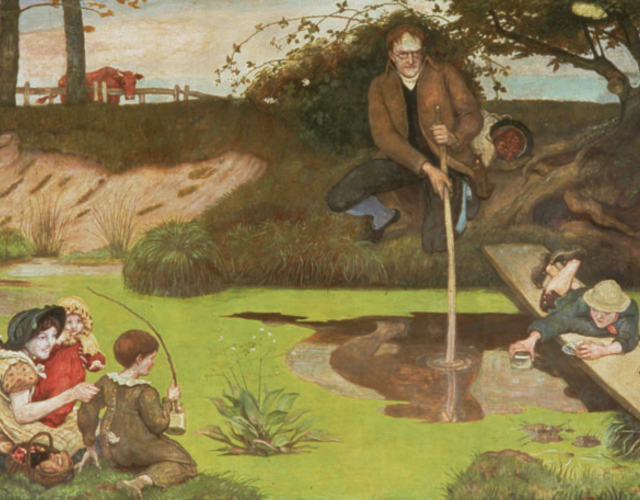Many consider 2008 the 200th anniversary of atomic theory, John Dalton’s momentous theory of the nature of matter. Dalton (1766–1844) proposed that all matter in the universe is made of indestructible, unchangeable atoms—each type characterized by a constant mass—that undergo chemical reactions by joining with and separating from each other. But anniversaries can be deceptive. It was 1808 when Dalton published the first volume of New Systems of Chemical Philosophy, which presented his atomic theory in full, but his ideas were in fact already known, as he had been talking and writing about them for at least five years. Yet, an additional century would pass before atomic theory became universally accepted.
The theory certainly had its early fans, including Swedish chemist Jöns Jakob Berzelius (1779–1848). There was hard evidence in its favor; conceiving of atoms in this way explained the stoichiometry of reactions, which posited that combined elements retained their proportions before, during, and after reacting with each other. However, not everyone found this fact compelling. Humphry Davy (British, 1748–1829) and Claude-Louis Berthollet (French, 1748–1822) were not convinced. Because atoms could not be seen, Dalton could not base his theory on direct observation, and this was a major stumbling block for many scientists.
Nevertheless atomic theory was useful, whether proven or not. It was easier to express stoichiometric proportions in terms of atoms than in terms of absolute mass. It is simpler to say that 1 atom of hydrogen joins with 1 atom of chlorine to form 1 molecule of hydrogen chloride than it is to say that 1 gram of hydrogen reacts with 35.45 grams of chlorine to make 36.45 grams of hydrogen chloride. Many chemists found themselves using atomic theory, even if they held their noses all the while.
Acceptance grew slowly over the next hundred years as the concept of the atom became useful for explaining a variety of things from molecular structure in organic chemistry to the spacing and movement of molecules in gas physics. By 1905 there were still some holdouts, including Marcellin Berthelot and the founding father of physical chemistry, Wilhelm Ostwald, but most chemists had accepted the existence of atoms. That year a young Albert Einstein penned a paper that doesn’t receive nearly as much attention as his work on the photoelectric effect and his special theory of relativity. This work used the concept of the atom to explore the phenomenon of Brownian motion.
When minute particles are suspended in a liquid, they move in a seemingly random, ever-changing course, each one only slowly moving in any direction. Earlier scientists had proposed that the particles moved because the liquid molecules were constantly in motion and collided with the suspended particles, jostling them in an erratic manner. Einstein took this idea further, building on the observation of Jacobus Henricus van’t Hoff that solute molecules move in the same manner as gas molecules and their behavior can be described using the gas laws. In his 1905 paper Einstein treated suspended particles as if they were giant molecules and went on to predict how they should behave according to the gas laws. For example, he stated that the average speed of the suspended particles should reflect the average kinetic energy of the moving molecules of the liquid in which the particles were suspended. He also predicted that, in a vertical cylinder of an aqueous suspension, gravitational pull would cause a greater density of particles toward the bottom of the cylinder and a lower density near the top, just as the earth’s atmosphere becomes thinner at higher altitudes.
Three years later, in 1908, Dalton’s New System of Chemical Philosophy turned 100 years old. Berthelot had died the previous year, rejecting atoms until the end. Ostwald still did not accept the existence of atoms. French scientist Jean Perrin took up Einstein’s challenge and began studying Brownian motion in great detail. Perrin carried out incredibly meticulous observations, plotting the paths of protein particles in aqueous suspensions. He studied their variations in distribution as a function of the tiniest variations in vertical height. He was able to show that their behavior matched Einstein’s predictions for particles that are being constantly rammed by unseen molecules. Once and for all the particulate nature of matter had been demonstrated in an unequivocal manner. A final crowning validation came in 1926 when Perrin received the Nobel Prize in Physics for his work.
Later scientists would use atomic force microscopy and scanning tunneling microscopy to give us even clearer observations of the particulate nature of matter. Today atomic theory is covered in the first chapters of most general chemistry textbooks. Most of us have grown accustomed to seeing it in this exalted place, and it can be easy to forget that it has not been there all along since 1808.




